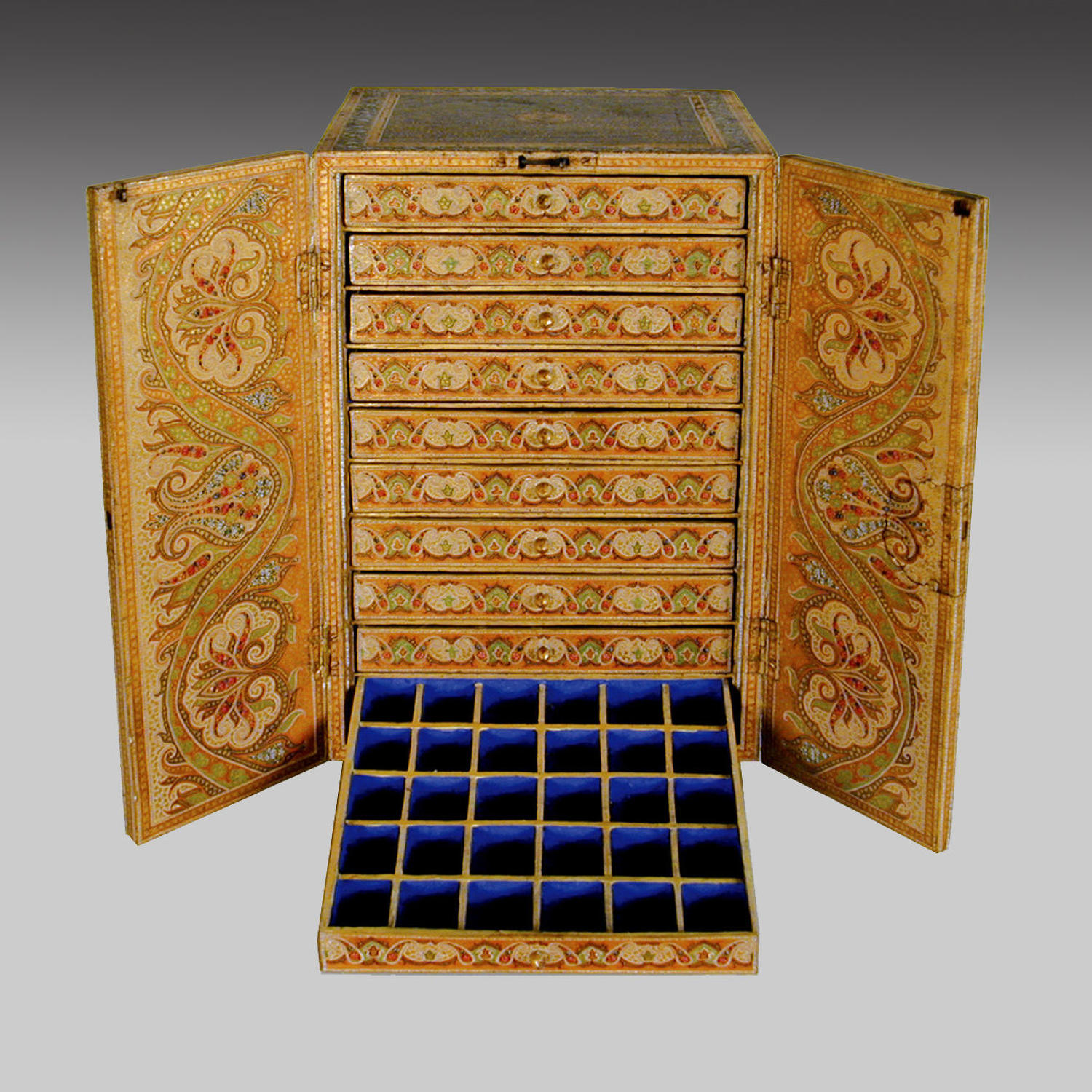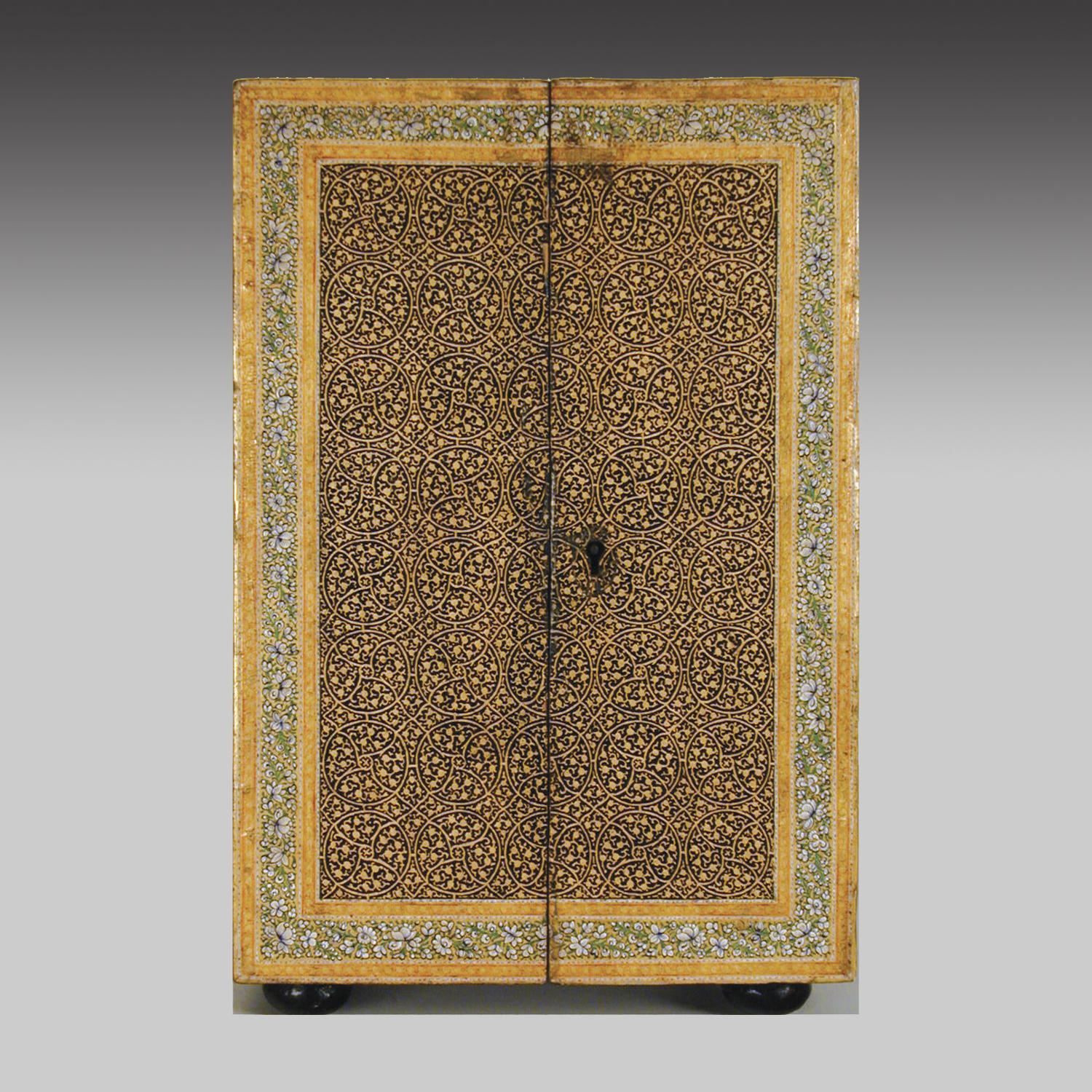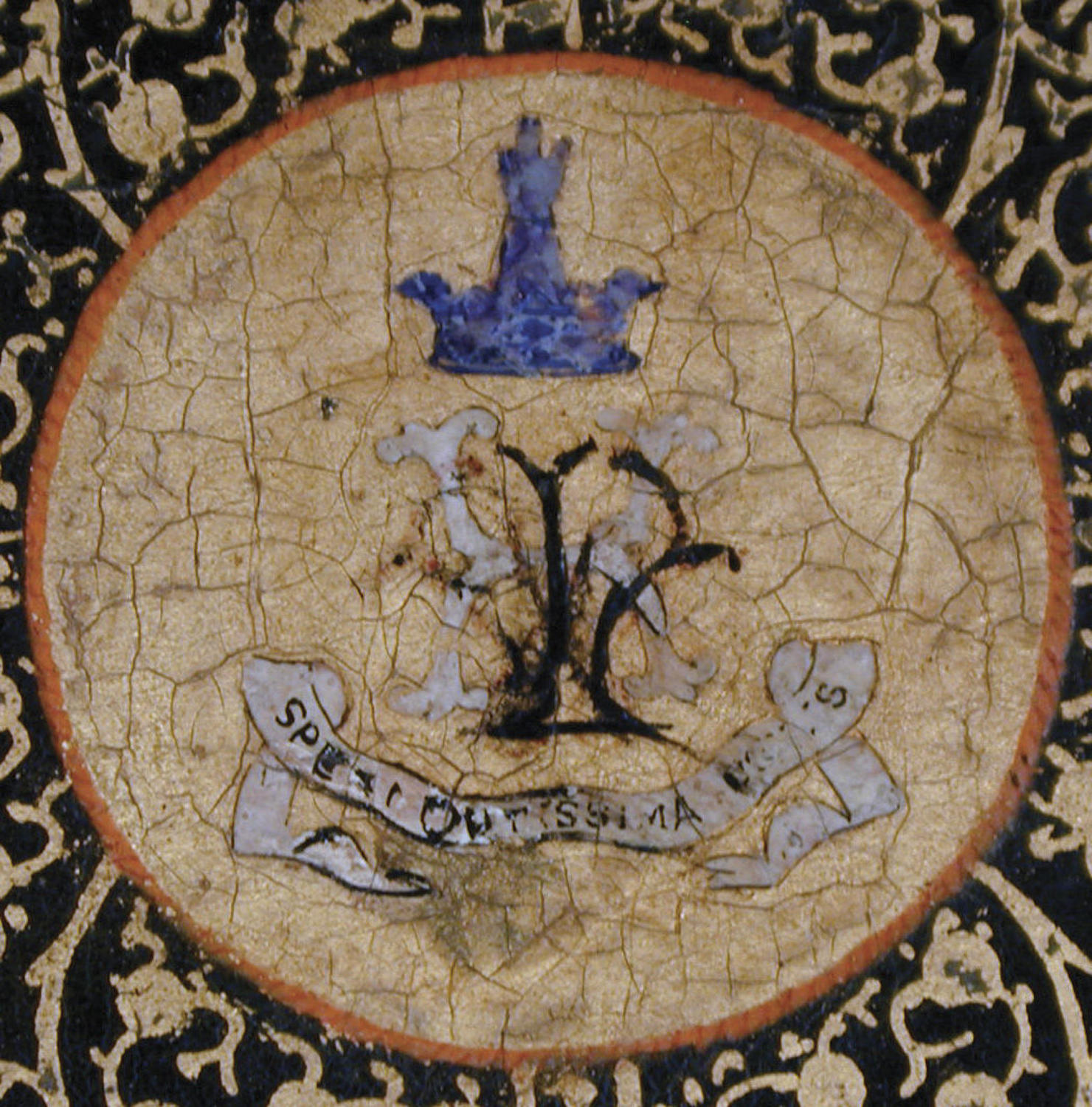
Baggott Church Street Ltd |
Tel: 01451 830370 or 01451 831106 Email: info@baggottantiques.com Web site: https://www.baggottantiques.com/ |
|
Code: 9240
Dimensions:
The 19th century antique Kashmiri cabinet of wood painted and varnished with gold decoration on a black ground with designs of interlacing leafy vines of roundels and cartouches. The sides, top and back are all decorated in the same manner. To the top, a central roundel bears the crest and motto, 'spes tutissima coelis', being that of the King family from Boyle Abbey, Co. Roscommon, Eire. The cabinet doors open to an interior decorated with the paisley design as found on shawls and which was influenced by designs from Persia. The drawers to the interior are all fitted with partitions, painted a matte blue, and were probably intended to display gemstones.
Srinagar, Kashmir, circa 1850 - 1900
A table with similar decoration and with an English coat of arms, which is now in the Peabody Essex Museum, Salem, USA and dated to 1883-86, is illustrated in Amin Jaffir’s book, Furniture from British India and Ceylon, page 300, Inventory No.119. A similar table also with a motto and crest was acquired by Frederic Church in 1880 for his house at Olana, Hudson, USA.
It is difficult to identify accurately the monogram that accompanies the crest to the top of this cabinet, but, with extensive research into the family, it can be suggested that the most likely member of the King family for whom it was made was Colonel Montague Jocelyn King-Harman. He was the son of the Hon. Laurence Harman King (later King-Harman), whose father was General Hon. Robert Edward King, later 1st Viscount Lorton (1773 – 1854). Educated at the Honorable East India Company College at Addiscombe, London – now Haileybury College, Colonel Montague Jocelyn King-Harman (1843-1941) held the rank of Colonel in the Indian Army and the office of First Deputy Secretary to the Government in India between 1892 and 1897. He was Deputy Assistant Quartermaster General (DAQMG) at Meerut between 1877 and 1882. From 13th June 1892, he was also a member of the Himalayan Brotherhood, a Masonic Lodge at Simla in northern India. The majority of his time spent in India was in the northern, Kashmiri region, which would also possibly suggest a greater connection to this cabinet. His first wife, Emily, was born in India and lived there with him after their marriage in 1870, whilst he served with the Bengal Staff Corps from 1863 until possibly 1897, when they returned to Britain to take up residence in Cheltenham. Montague King-Harman was the only member of the extended family to have spent any significant amount of time in India, although there is little doubt that others did go with their respective regiments to deal with the Indian Mutiny of 1857.


